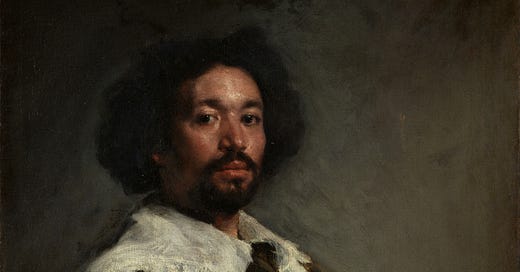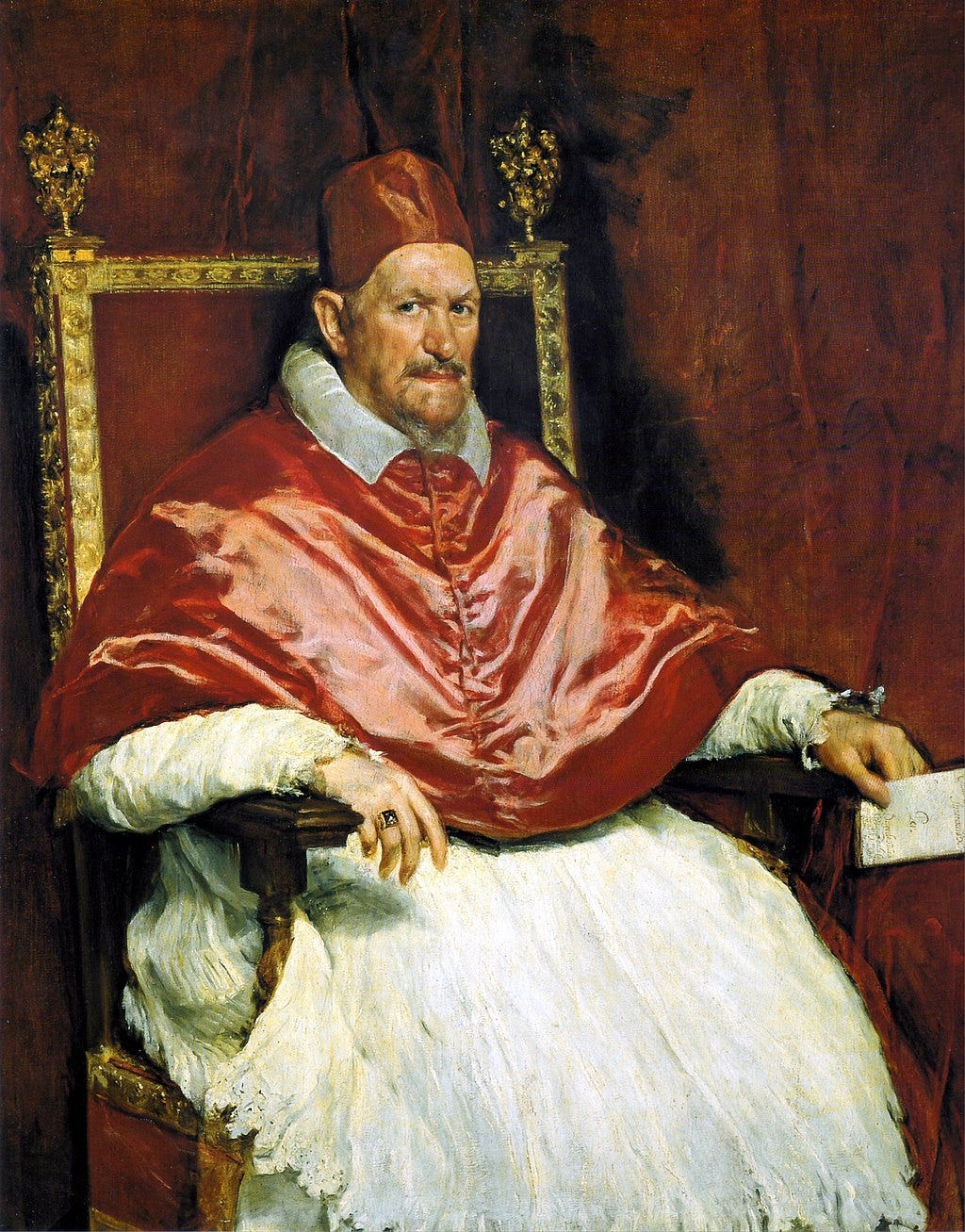Velazquez’s second trip to Rome
Diego Velazquez (1599-1660) is arguably the most representative painter from the Spanish Golden Age. Born in Seville, he moved to Madrid at 24 after being appointed painter to the king. He quickly became the most important court painter and was even promoted to superintendent of royal works, a position that required him to acquire numerous works for the royal collections.
Velázquez made his first trip to Italy in 1629-1630, where he had the opportunity to study many masterpieces, some of which were in private collections but were opened to him due to his position as the official painter to the king of Spain. Upon his return to Madrid, Velázquez entered a new phase in his art, characterized by greater luminosity and rapid brushstrokes.
In 1649, King Philip IV of Spain sent him on a mission to Rome to purchase artworks to decorate the Royal Alcázar of Madrid. This was Velázquez’s second time in Italy. He was there commissioned to paint a portrait of Pope Innocent X, a challenging task due to the many shades of red, from the dark background and the vivid clothing. To prepare for this honor, Velázquez decided to paint a portrait of Juan de Pareja, who had traveled with him to Rome. This portrait served as a preparatory exercise for the official portrait of the Pope, allowing Velázquez to practice both the portrait and the limited palette of tones required..
Despite being intended as a simple preparatory exercise, the ‘Portrait of Juan de Pareja’ was exhibited at the Pantheon, where it was universally praised for its truthfulness. It transcended its original purpose to become a masterpiece in its own right, celebrated for its remarkable realism and the dignity with which Velázquez portrayed his enslaved assistant.
The portrait
The painting depicts Juan de Pareja, a Morisco (a descendant of Spanish Muslims) from Antequera, Spain, who was owned by Velázquez. Although Pareja worked in his master’s workshop, his status prohibited him from painting, limiting his role to preparing materials and performing administrative tasks.
In the portrait, Juan de Pareja is depicted in a half-profile view, gazing directly at the viewer with a confident and serious expression. He is elegantly dressed in a cape and lace collar, and the lighting masterfully highlights the rich tones of his skin. As in his other portraits, Velazquez painted his subject with what is noblest qualities of the human soul. This is especially troubling in this case, as he captured all the humanity of a man not fully recognized as such by the society at the time.
The picture was also groundbreaking for its time, as it was one of the earliest known portraits of a Spanish man of African descent. It is all the more remarkable to see that it was shown at the Pantheon with great success.
As in the later ‘Portrait of Innocent X’, Velázquez's loose brushwork, which would later be rediscovered and praised by the Impressionists, brings an intense vitality to the subject, capturing his essence with remarkable skill.
Life of Juan de Pareja afterwards
The portrait was the last time that Juan de Pareja was a subject in art, as well as in real life. A few months after the exhibition of his portrait, Velazquez released him from slavery, a common practice after a period of continued service. Fully freed in 1654, Juan de Pareja went on to become a renowned artist. Velazquez’s portrait likely served as a catalyst for his artistic career, despite evident qualities and a style using Venetian-inspired color palettes that contrasted with the more subdued works of Velazquez.
His most renowned work is ‘The Calling of Saint Matthew’, a large-scale religious painting suggesting he had generous patrons. In this work, he included a self-portrait echoing the one made by his former master. He continued to work as a painter in Madrid until his death in 1670.
The portrait gained significant renown after being acquired by the Metropolitan Museum of Art in New York in 1971 for a record $5.5 million at the time. It is now considered one of the museum’s most precious artworks and stands as a powerful reminder of the often-overlooked contributions of enslaved individuals to the cultural heritage of Spain's Golden Age.







